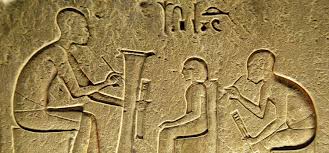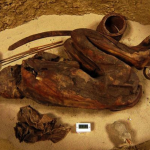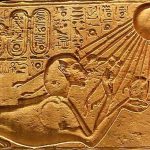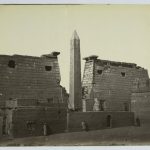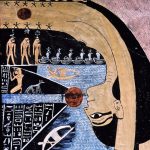Ancient Egyptian women had the right to education. From the age of four, they were trained in instructive establishments, where they were taught science, geometry, and the essentials of hieroglyphic and conversational hieratic. Eventually, they would gain a certificate, the title of ink put holder, and would be authorized for full practice in any of the branches of knowledge they chose. For instance, Egyptian women could attend remedial schools along men or attend a female-only school. One of the greatest examples of the remarkable success of Ancient Egyptian women in science is the one of Tapputi-Belatikallim (Figure 1E), who worked with chemicals utilized for aroma generation as a part of Mesopotamia around 1200 B.C.

Medicine
Throughout the ancient history of Egypt, there were more than 100 noteworthy female specialists recorded in every domain of medicine. These women were very educated and highly regarded in their specialization, with pictures showing up on tomb dividers, and hieroglyphics scratched. Among the most imperative female doctors of this time was Peseshet (Figure 1D). As seen in engravings found in a tomb of an Old Kingdom, nearly at 3100 B.C.–2100 B.C., she was known as an “administrator of specialists.” Peseshet was a doctor in her specialization, an administrator, and the executive to a group of female doctors. Another significant female doctor from Ancient Egypt was Merit Ptah (Figure1E); she was the first-ever named doctor and the first woman in the historical backdrop of the pharmaceutical field. In this context, she rehearsed pharmaceutical science almost 7,000 years ago, and was deified by her child on her tomb as “The boss doctor.” Another remarkable Ancient Egyptian woman made her print on the field of obstetrics and gynecology, subsequently, in the second century A.D., a doctor named Cleopatra (not the long-dead previous Queen). Cleopatra wrote widely about pregnancy, labor, and women’s well-being, her writings were consulted and examined for more than 1,000 years afterward (Rossiter, 1982).

Furthermore, records exist about Egyptian female doctors, such as Merit Ptah, 2700 B.C and Zipporah, 1500 B.C. Therefore, Egyptian women of ancient times were privileged, as they were able to seek their dreams, strengthen their family life, study, and achieve progress in their work. This led to Egyptian women being among the most regarded doctors of their time.


